Colorado
A Photo Journal of America's Rocky Mountain State
Article Date: January, 2015
Article and Photography by Mark Quasius
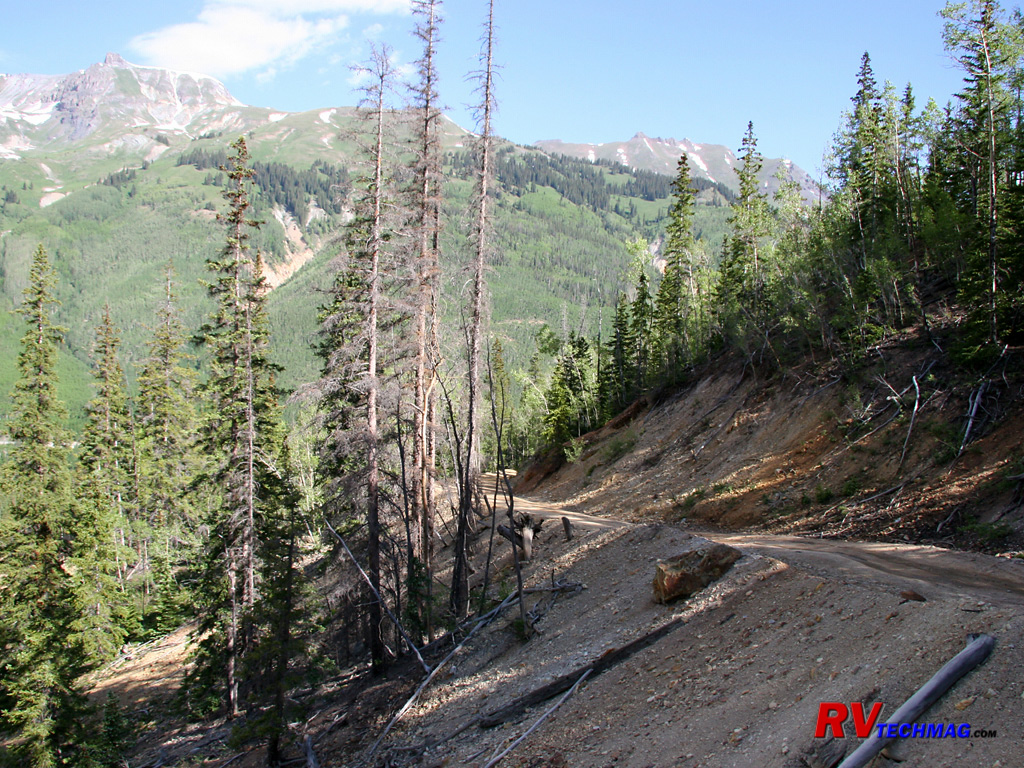
Rocky Mountain National Park
Rocky Mountain National Park is situated just west of Estes Park, which is about a 1 hour drive north of Denver. This large
area was set aside for the protection of its natural features in 1915 it's 416 square miles begin in the low wet grassy valleys and extend upwards as
at least 60 mountains exceed 12,000'. The highest is the football field sized summit of Longs Peak at 14,259' but the entire park is filled with rocky
wilderness that reaches to the sky. The old Fall River Road that used to be the way into the park is now a one way gravel road that first opens around
July 4th after the snow has been cleared. Instead, most visitors take Trail Ridge Road, a winding alpine scenic highway that begins in the glacial
moraine valleys below and passes through subalpine forests and then alpine tundra before topping out at over 12,000' near the Alpine Visitor's Center.
From here the tourist has the option of passing down the other side to Granby or returning via Trail Ridge Road to Estes Park. Near the Continental
Divide you'll be able to see the Gore Range as well as the Never Summer Mountains. The headwaters of the Colorado River begin in this area.
Rocky Mountain National Park is known for its elk population. Indeed, many of these elk flow out of the park itself and are
seen wandering around the town of Estes Park, particularly in the fall. Bighorn Sheep are generally seen at Sheep Lakes from May through August as
they travel for water and Moose can be found on the parks far west side along the Colorado River in the Kawuneeche Valley. Marmots and Pikas favor
the rocky areas while Golden Eagles, Steller's Jays, and Clark's Nutcrackers can be seen almost anywhere along Trail Ridge Road.
There is a wide number of recreational activities in the park. From automobile sightseeing, bicycling, hiking, and mountain
climbing, to horseback riding there's bound to be something for everyone. A shuttle service is available to transport visitors to the crowded Bear
Lake parking area in the busy summer months for those who want to hike the trails in that area.
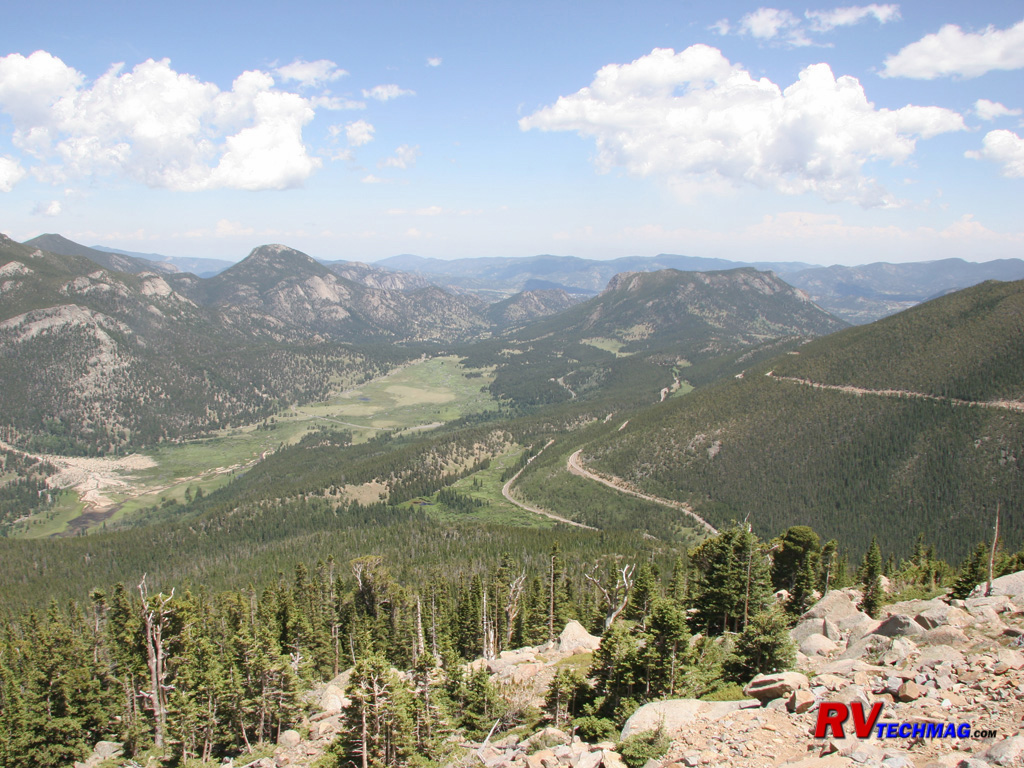
Moraine Park
From up on the Fall River Road, this view looks back down into Moraine Park, carved out by glacial activity many years ago.
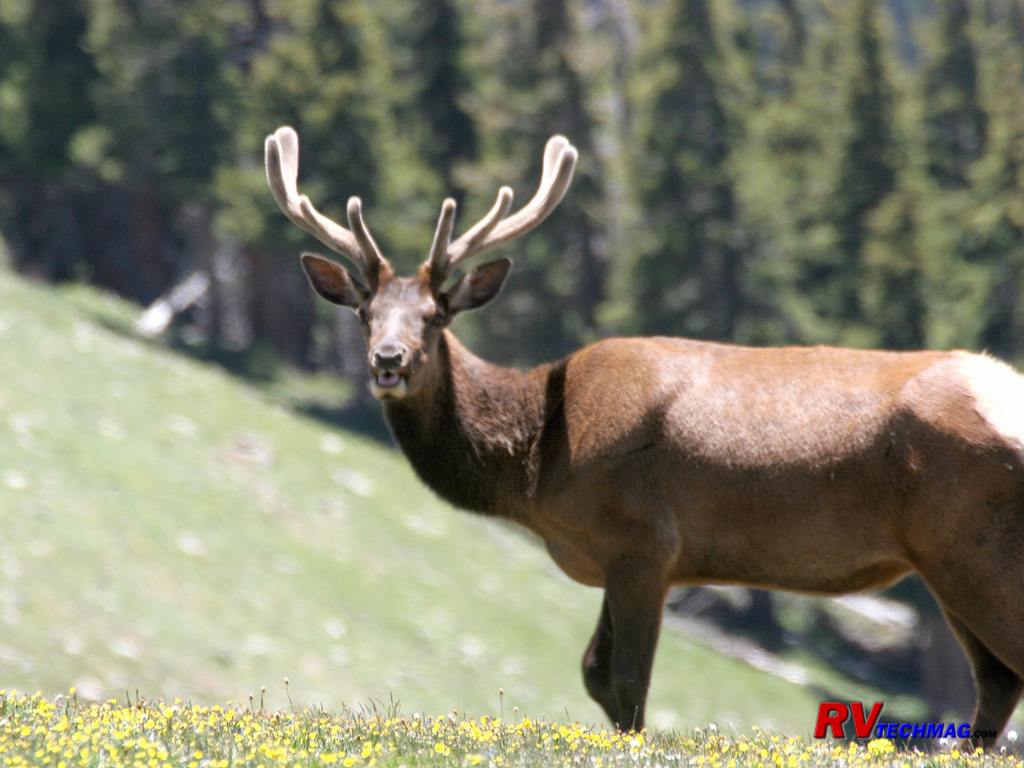
Elk in Velvet
This image of a young bull elk was taken in late June. Elk shed their antlers every spring and begin to grow new ones which are
covered in velvet, which is a the series of small blood vessels that nourish their growth. When fall arrives this velvet dies and the antlers are sharp
and sturdy. Elk are seen rubbing the velvet off on nearby trees to prepare for the fall rut.
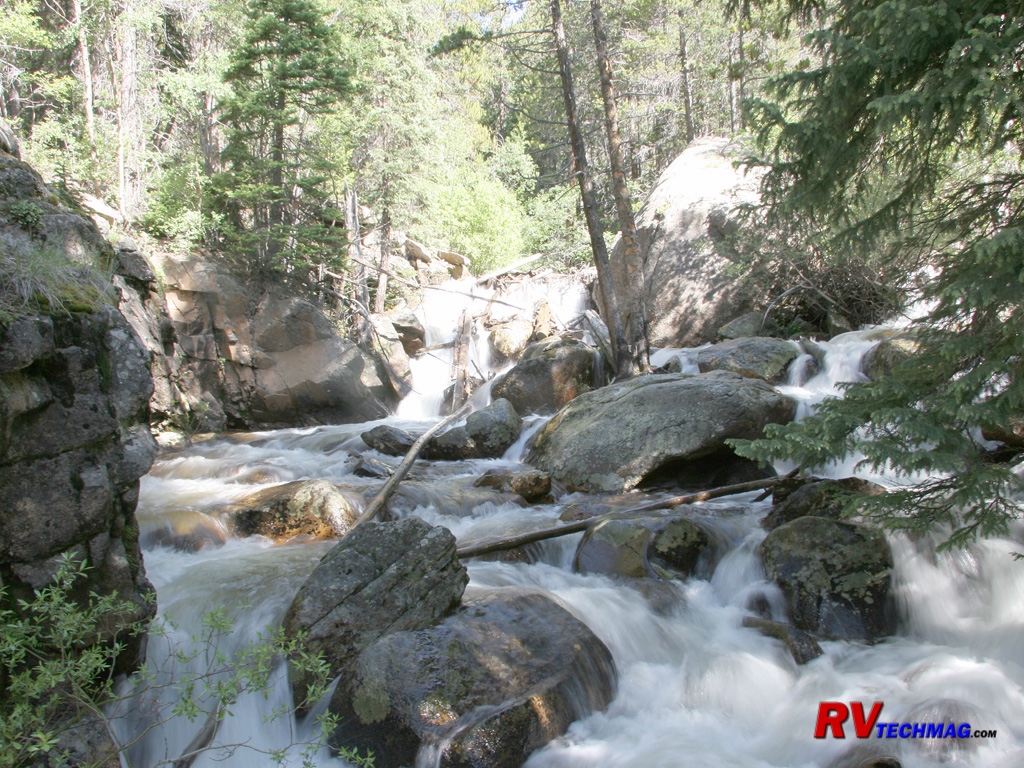
Fall River
The Fall River begins its run high in the peaks of Rocky Mountain Park. It flows down through the Fall River Canyon on its way
to the meadows in Moraine Park.
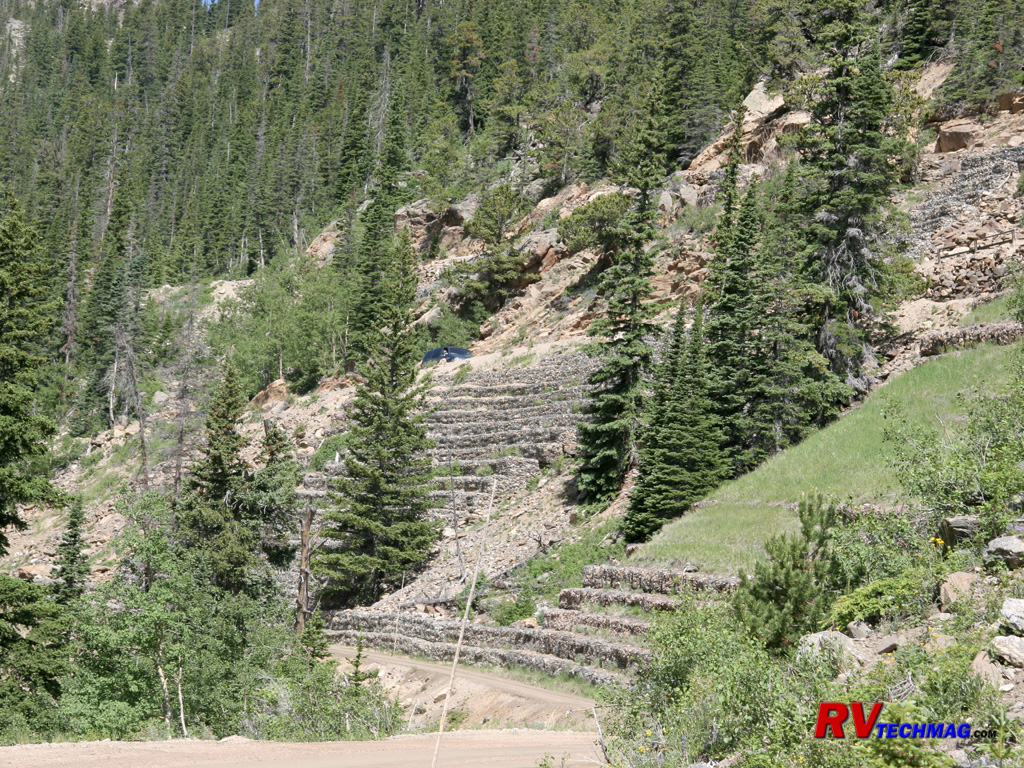
Avalanche Zone
The Fall River Road passes through the canyon and steep slopes tower over it which is why it takes until the beginning of July
for the snow to be cleared. The heavy snows that hang on these cliffs cause avalanches in a number of areas that strip the slope of all trees and washes
the soil away, blocking the road. This particular slope was terraced and filled with stone. Then a protective steel mesh was anchored over it to keep
the stone in place in order to prevent future avalanches from washing the slopes away.
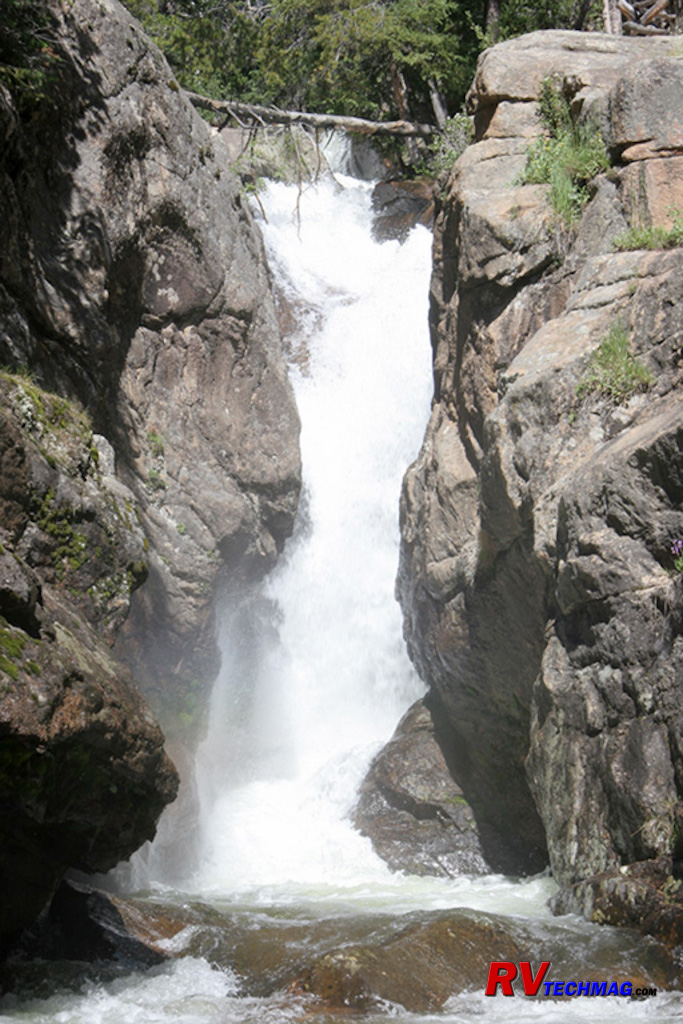
Fall River Waterfall
This waterfall was seen in Fall River Canyon, where the Fall River cascades down to the valley below.
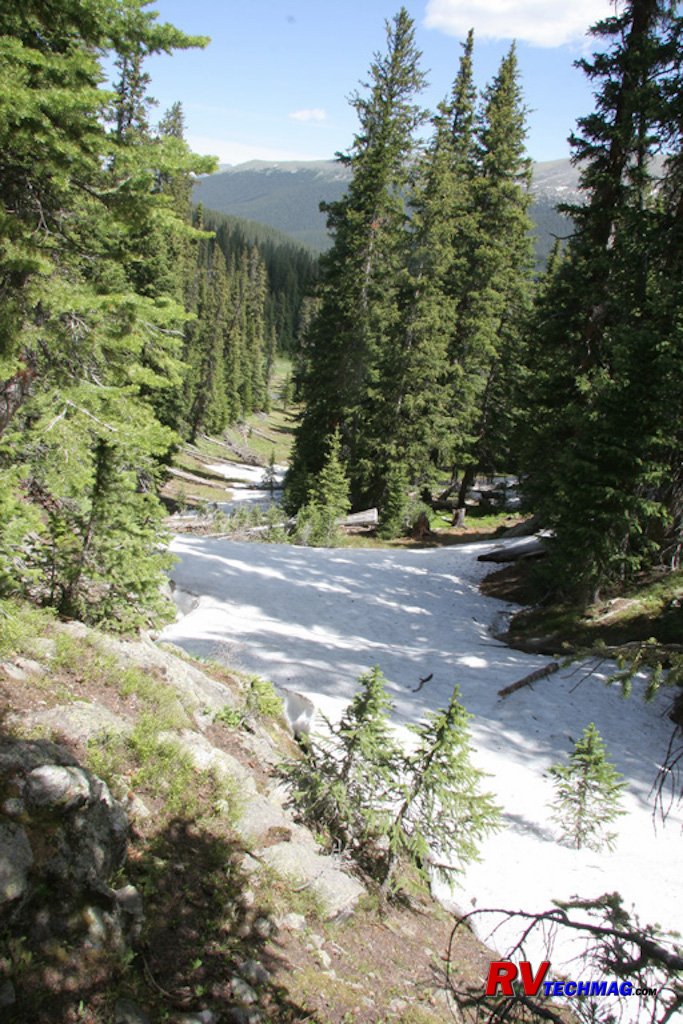
Trapper's Trail
This trappers trail was a popular method of traversing the park in the 1840s when trapping for Beaver was in full swing. The
trappers would cache their supplies along this route for future retrieval. This early July picture shows the amount of snow still present at
this altitude.
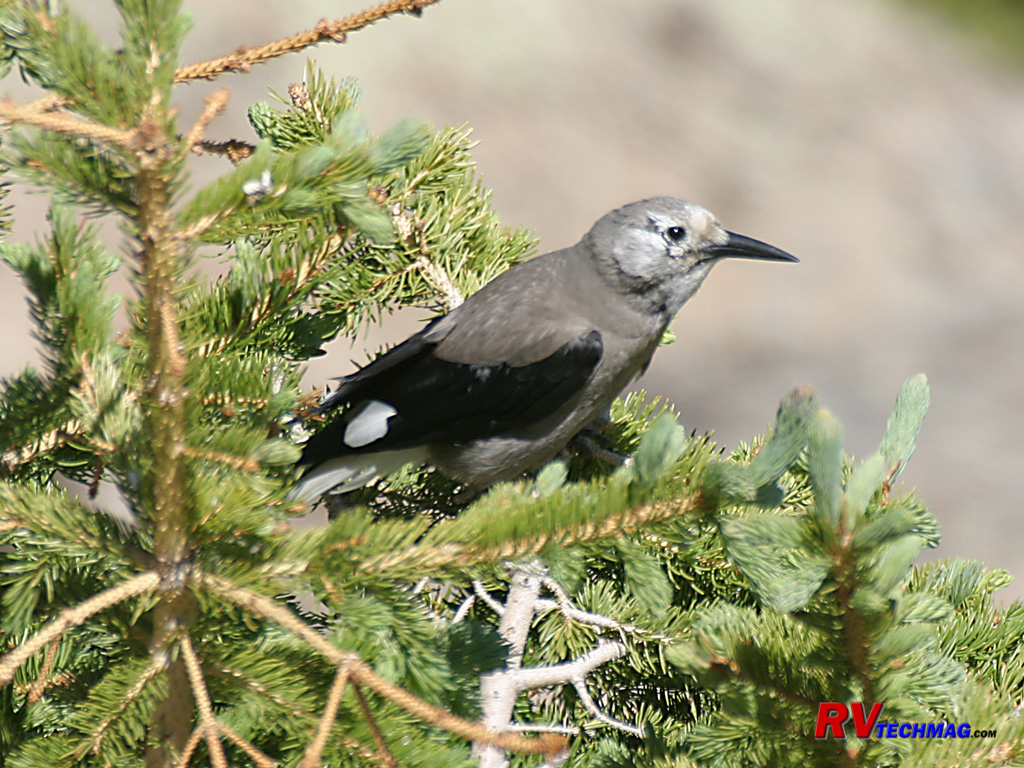
Clark's Nutcracker
The Clark's Nutcracker is very prevalent in the high country. It feeds on pine seeds and stores its surplus seed in caches for
retrieval during the winter months. It has been known to cache more than their actual needs, up to 100,000 seeds, in order to protect against theft
by other animals. it has the uncanny ability to remember where each and every seed is stored and has been known to unerringly find seeds 6 months later
when the seeds have been buried under 3' of snow cover.
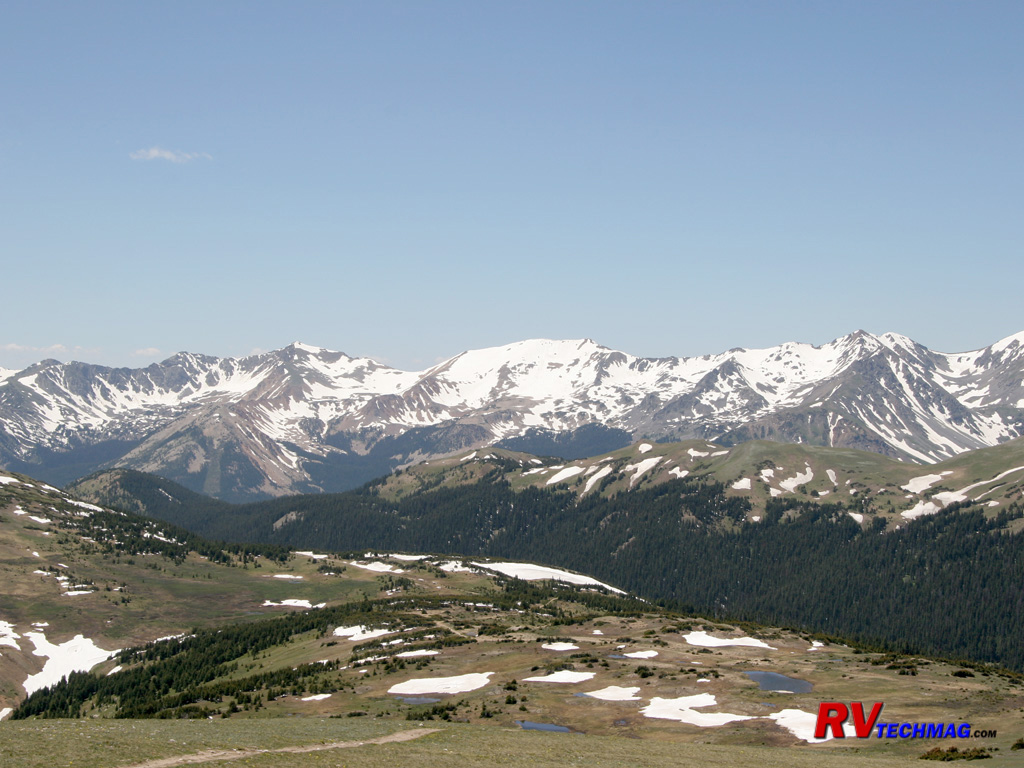
Never Summer Mountains
On the west side of the park, this snow covered mountain range (hence the name) is about 10 miles long and consists of 10 peaks
rising over 12,000'. It straddles the Continental Divide and separates the waters of the Colorado River to the east from the upper basin of the North
Platte River to the west.
Return to Home Page
If you enjoyed this article be sure to recommend RVtechMag.com to your friends, like us on Facebook or Twitter
or subscribe to our RSS feed.



|













